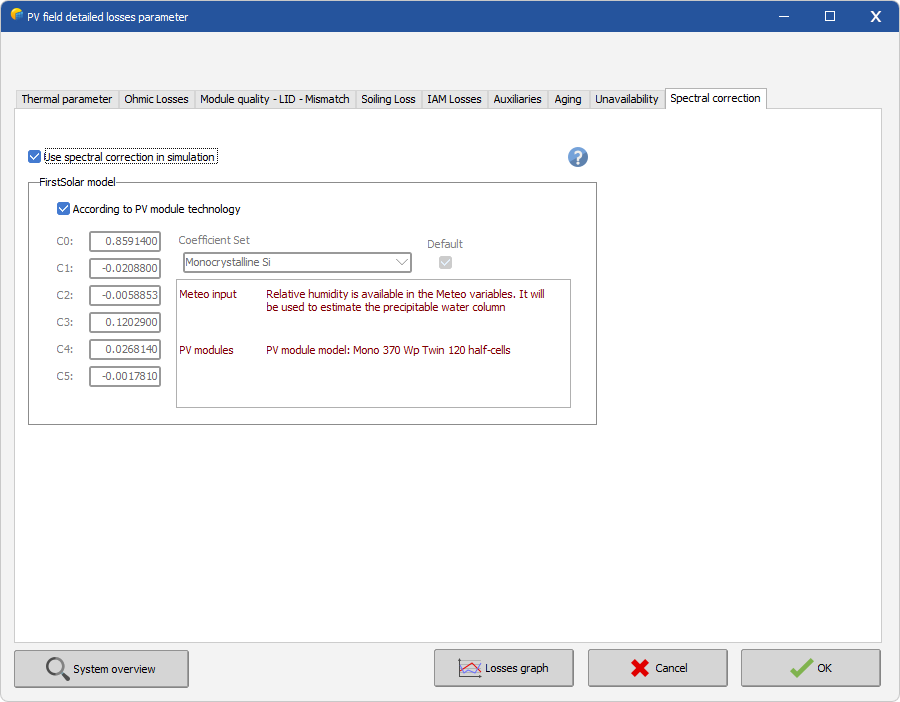Spectral Correction
The spectral correction takes into account the changes in the solar spectrum due to scattering and absorption in the atmosphere. These changes depend on the water content in the atmosphere, the aerosols and the traveling distance of the light, expressed in Air Mass (AM). There are several models implemented in PVsyst to describe the spectral correction:
- The CREST model that is used for amorphous silicon modules. This correction is applied automatically when spectral correction is activated.
- The spectral correction for PV modules in the Sandia database. This correction is applied automatically when spectral correction is activated.
- The FirstSolar spectral correction model that is disabled by default, and can be turned on by the user.
First Solar Spectral correction model management
The FirstSolar spectral correction model is switched on in the dialogue 'Detailed losses':
When the spectral correction is enabled, the coefficient set corresponding to the PV module technology is used by default in the simulation. It is possible to override this behavior by un-checking the corresponding box and selecting any of the available coefficient sets. In this case, the coefficient set will not follow any more possible changes of the PV module in the system definitions, and it is the responsibility of the user to ensure that a meaningful set is chosen for the simulation.
The FirstSolar spectral correction model uses the Air Mass and Precipitable Water Column as input variables. The air mass is computed from altitude and sun position, while the precipitable water has either to be present in the weather data file, or be estimated from relative humidity. Therefore, this correction can only be applied in the simulation, if either the precipitable water or the relative humidity are present in the weather data variables. For synthetic hourly weather data files created with PVsyst 6.7.4 or later, the relative humidity is always present.
If the spectral correction is used in the simulation, this will be mentioned on the final report. The system summary will list the set of coefficients that was used, and the loss diagram will feature a contribution called 'spectral losses'.
